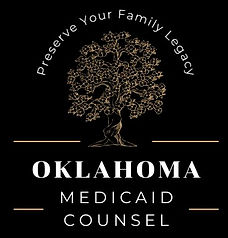Common Medicaid Myths
Medicaid is one of the most misunderstood government programs, especially when it comes to long-term care. Here are the most common myths and misconceptions people have about Medicaid, along with the truth behind them:
🔹 Myth #1: “I have to be broke to qualify for Medicaid.”
Truth:
You must meet financial eligibility rules, but you don’t have to spend everything down to zero. With proper planning, you can preserve assets legally and still qualify. And you can do this effectively even if the need for care is immediate or you are already receiving long-term care.
🔹 Myth #2: “Medicaid will take my house.”
Truth:
Medicaid does not take your house while you're alive. In many cases, your home is exempt. However, estate recovery can come into play after death unless you plan ahead with the right legal strategies.
🔹 Myth #3: “If I give away assets, I’ll qualify right away.”
Truth:
Medicaid has a 5-year look-back period. If you give away money or property during that time, it can trigger a penalty period where you’re ineligible for benefits—even if you now meet the financial limits. Sometimes transferring assets can be a useful legal strategy, but it must be done carefully to satisfy Medicaid rules.
🔹 Myth #4: “It’s too late to apply if my loved one is already in a nursing home.”
Truth:
It’s never too late to apply. Even if someone is already receiving care, a Medicaid planning attorney can often help you qualify quickly and protect remaining assets. The longer you wait to apply, the longer before Medicaid can begin to cover the costs of care.
🔹 Myth #5: “Medicare pays for long-term care.”
Truth:
Medicare is an acute care program and does not cover long-term nursing home care—only short-term rehab after a hospital stay (typically capped between 20 and 100 days). For ongoing care, Medicaid is the primary option for those who qualify. If it looks like long-term care will be needed, don’t wait to begin planning for eligibility.
🔹 Myth #6: “Only low-income individuals can benefit from Medicaid.”
Truth:
While Medicaid is income and asset-based, most families qualify with the right planning—especially when facing the high cost of long-term care, which can exceed $90,000/year in Oklahoma.
🔹 Myth #7: “I can just give everything to my kids to qualify.”
Truth:
Improper transfers can result in long periods of ineligibility. Medicaid penalizes most gifts or transfers made within five years of applying and even transfers outside five years may be scrutinized. Strategic planning with an attorney is essential.
🔹 Myth #8: “My retirement accounts don’t count.”
Truth:
In many states, including Oklahoma, retirement accounts like IRAs and 401(k)s are counted as assets. Oklahoma regulations treat the account value as an asset and distributions are considered income, in a way double counting the account.
🔹 Myth #9: “My spouse will lose everything if I go on Medicaid.”
Truth:
Actually, with proper legal planning, the opposite can be true. Medicaid’s spousal protection rules allow the healthy spouse (the “community spouse”) to keep a significant portion of assets and income and in most cases, extra assets can actually be transferred to the community spouse.
You don’t have to impoverish your spouse. These rules can provide significant planning opportunities for a Medicaid attorney to help you legally preserve family resources, but you have to take the correct steps in the proper order.
🔹 Myth #10: “I can handle the Medicaid application on my own.”
Truth:
You can apply on your own, but incomplete understanding of the Medicaid program or mistakes in the application (or even mistakes by the agency workers) can result in delays, penalties, or denial. Sometimes months can go by only to learn you are denied over a minor issue that could have been avoided.
Medicaid rules are complex and differ by state. Professional guidance can help you avoid costly errors and protect your family's financial resources.
